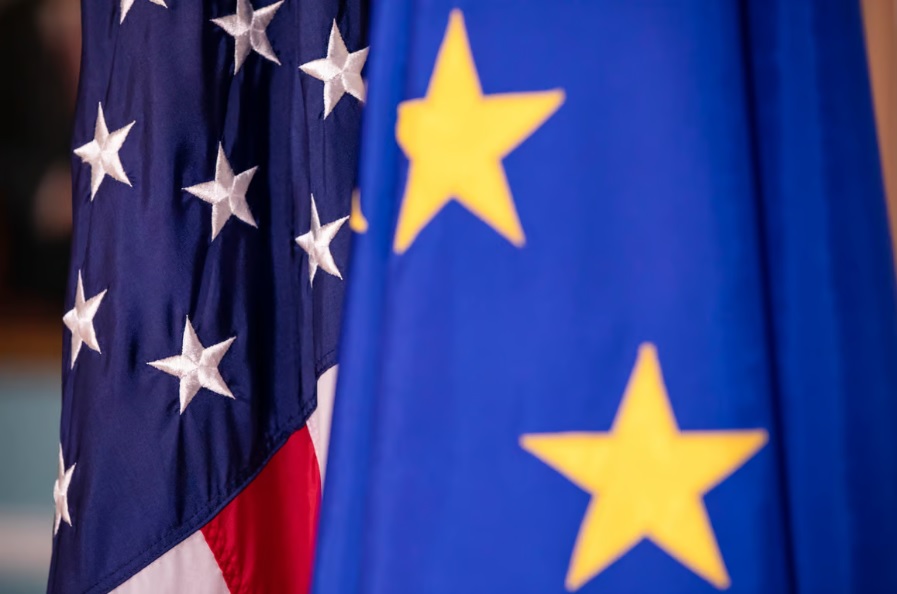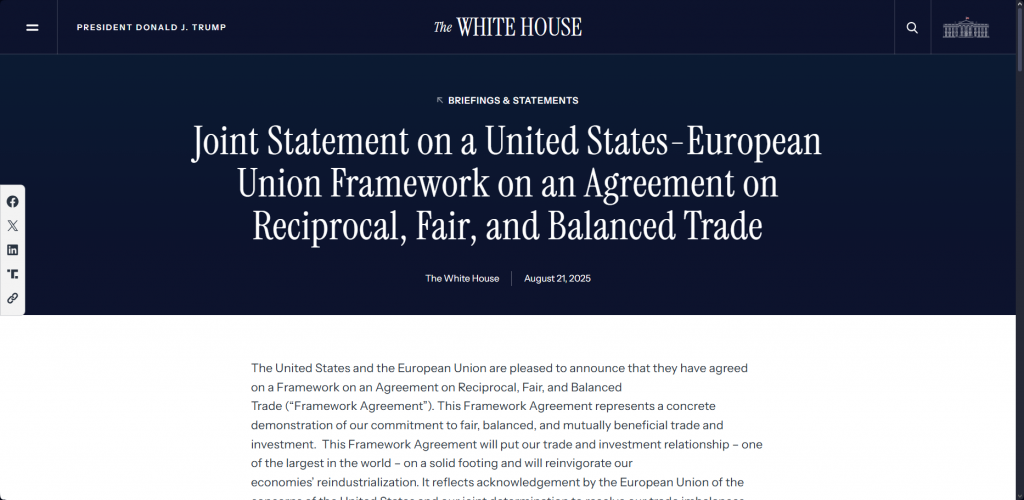BREAKING: US-EU Forge Historic $750B Trade Pact with 15% Tariff Framework
Washington and Brussels just rewrote the global trade rulebook—and markets are reacting.
The Numbers Don't Lie
A whopping $750 billion in cross-border investment now flows under newly streamlined regulations. That's not stimulus—it's a structural overhaul. Meanwhile, the 15% tariff framework creates unprecedented predictability for exporters who've been navigating chaos since 2018.
Why Crypto Traders Should Care
Traditional markets hate uncertainty more than they hate taxes. This deal eliminates both—potentially pulling institutional capital away from 'safe haven' assets like gold and Treasuries. Smart money's already repositioning for risk-on environments where compliance costs drop 15% overnight.
Wall Street's predictable euphoria misses the point though—real innovation happens when borders become frictionless, not when tariffs become slightly less punitive. But hey, at least they finally found a number everyone could agree on after five years of arguing.
How Tariff Reductions, Auto Imports, And Digital Trade Rules Boost European Investments

Immediate Auto Import Relief Under US EU Trade Deal

The US EU trade deal delivers immediate benefits for auto imports, reducing European vehicle tariffs from 27.5% to 15% within weeks actually. Germany, which exported $34.9 billion in cars and auto parts to the US in 2024, benefits most from these tariff reductions. The relief is being applied once the EU introduces legislation for its own tariff reductions on American industrial goods.
European investments in US automotive manufacturing are expected to increase significantly under the new digital trade rules framework right now.
Broader Tariff Reductions and Investment Commitments
Beyond auto imports, tariff reductions extend to aircraft parts, pharmaceuticals, and also semiconductors at the 15% cap. Steel and aluminum products may receive discounted rates under a new quota system, which represents a shift from the previous 50% tariffs.
The US EU trade deal was praised by officials, with European investments totaling $600 billion being targeted at strategic US sectors including pharmaceuticals and advanced manufacturing. The EU commits to purchasing at least $40 billion in US artificial intelligence chips while substantially increasing defense equipment procurement.
Digital Trade Rules and Energy Purchase Commitments
The US EU trade deal addresses digital trade rules disputes, with the EU committing not to adopt network usage fees. The bloc will provide more flexibility in carbon-intensive import levies and also ease corporate sustainability requirements that restrict transatlantic trade.
President Donald TRUMP praised the US EU trade deal framework by calling it.
The agreement includes $750 billion in US energy purchases through 2028, covering liquefied natural gas, oil, and nuclear products. Agricultural market access improvements cover tree nuts, dairy products, processed foods, and meat products along with some other items.
The US EU trade deal represents significant progress from last month’s preliminary agreement, though implementation depends on both sides delivering legislative commitments for tariff reductions, European investments, auto imports, and digital trade rules in the coming months.

